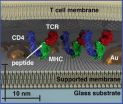(Press-News.org) PULLMAN, Wash.—Using fish bred at Washington State University, an international team of researchers has mapped the genetic profile of the rainbow trout, a versatile salmonid whose relatively recent genetic history opens a window into how vertebrates evolve.
The 30-person team, led by Yann Guiguen of the French National Institute for Agricultural Research, reports its findings this week in Nature Communications.
The investigators focused on the rate at which genes have evolved since a rare genome doubling event occurred in the rainbow trout approximately 100 million years ago. Unlike most evolutionary processes involving mutations and the selection of advantageous traits, a doubling event acts like the copied draft of a piece of writing that can be edited and recast without the risk of destroying the earlier version.
Ordinarily, the consequences of such doubling events are lost to science as they get cast out as a result of genetic changes in subsequent generations. But because 100 million years is a relatively short time for doubling events, the trout researchers could in effect glimpse the fish's evolutionary editing process.
"In humans and most vertebrates the duplication events were older so there are fewer duplicated genes still present," said Gary Thorgaard, a co-author and WSU biologist with four decades of experience peering into the trout's genes. "Most of the duplicated genes get lost or modified so much that they are no longer recognizable as duplicates over time. In the trout and salmon we can see an earlier stage in the process and many duplicated genes are still present. "
The rainbow trout, Oncorhynchus mykiss, is one of life's great success stories. It has straddled the worlds of nature and nurture, naturally thriving in a range of temperatures and water quality while responding to domestication so well that it has been spread by human hand from the Pacific Rim to thrive in waters on six continents.
In Washington alone, state hatchery crews have stocked more than 16 million fish in lakes. The lowland-lake trout-fishing season opener, which takes place this year on April 26, draws some 300,000 people, making it the state's most popular outdoor sporting event.
Thorgaard, the only American on the largely French research team, provided genetic material from the Swanson line of rainbow trout. Originally from Alaska's Kenai Peninsula, the fish has been cloned at WSU, ensuring that researchers are looking at the same fish in successive studies and simplifying interpretation of its sequenced genes.
"Several studies had previously been done on the Swanson clonal line," said Thorgaard, "which helped in producing and interpreting the genome sequence in this study."
WSU research associate Joe Brunelli extracted DNA from fin tissue, using fish managed with several other lines by Paul Wheeler in the Pullman campus's indoor fish hatchery.
Guiguen and his colleagues used both the genome sequence and gene expression data from the rainbow trout to show that roughly half of all protein coding genes have been deleted since its genetic doubling event. It has retained almost all its microRNA genes, which help regulate gene expression.
The researchers also found the fish retained original or nearly original genes involved in embryonic development and development of connections between nerve cells. The timing associated with these changes suggests gene evolution after an event such as this is a much slower process than previously thought.
"It seems that the rate of evolution can vary in different situations," said Thorgaard. "Some animals, like the lungfish and coelacanth, are 'living fossils' that have been around for hundreds of millions of years without changing very much. Others, like the polar bear, seem to have evolved quite recently. After the trout gene duplication, the process happened more slowly than it has in most other vertebrate animals, and we can still watch it going on."
INFORMATION:
International team sequences rainbow trout genome
DNA drawn from trout bred at Washington State University
2014-04-22
ELSE PRESS RELEASES FROM THIS DATE:
Wildlife response to climate change is likely underestimated, experts warn
2014-04-22
AMHERST, Mass. – Analyzing thousands of breeding bird surveys sent in by citizen scientists across the western United States and Canada over 35 years, wildlife researchers report that most of the 40 songbird species they studied shifted either northward or toward higher elevation in response to climate change, but did not necessarily do both.
This means that most previous studies of potential climate change impacts on wildlife that looked only at one factor or the other have likely underestimated the effects of environmental warming, say research wildlife biologists ...
Vacuum ultraviolet lamp of the future created in Japan
2014-04-22
WASHINGTON D.C., April 22, 2014 -- A team of researchers in Japan has developed a solid-state lamp that emits high-energy ultraviolet (UV) light at the shortest wavelengths ever recorded for such a device, from 140 to 220 nanometers. This is within the range of vacuum-UV light -- so named because while light of that energy can propagate in a vacuum, it is quickly absorbed by oxygen in the air.
This fact makes vacuum UV light extremely useful for industrial applications from sterilizing medical devices to cleaning semiconductor substrates because when it strikes oxygen-containing ...
Applying math to biology: Software identifies disease-causing mutations in undiagnosed illnesses
2014-04-22
(SALT LAKE CITY)–A computational tool developed at the University of Utah (U of U) has successfully identified diseases with unknown gene mutations in three separate cases, U of U researchers and their colleagues report in a new study in The American Journal of Human Genetics. The software, Phevor (Phenotype Driven Variant Ontological Re-ranking tool), identifies undiagnosed illnesses and unknown gene mutations by analyzing the exomes, or areas of DNA where proteins that code for genes are made, in individual patients and small families.
Sequencing the genomes of individuals ...
New electric fish genus and species discovered in Brazil's Rio Negro
2014-04-22
AMHERST, Mass. – Scientists at the University of Massachusetts Amherst and the Instituto Nacional de Pesquisas da Amazônia (INPA), Brazil, this week report that they have discovered a new genus and species of electric knifefish in several tributaries of the Negro River in the Amazonia State of Brazil.
Professor Cristina Cox Fernandes at UMass Amherst, with Adília Nogueira and José Antônio Alves-Gomes of INPA, describe the new bluntnose knifefish in the current issue of the journal Proceedings of the Natural Sciences of Philadelphia.
Their paper offers details about ...
Neurotics don't just avoid action: They dislike it
2014-04-22
PHILADELPHIA (April 22, 2014) – That person we all seem to know who we say is neurotic and unable to take action? Turns out he or she isn't unable to act but simply doesn't want to.
A study of nearly 4,000 college students in 19 countries has uncovered new details about why neurotic people may avoid making decisions and moving forward with life. Turns out that when they are asked if action is positive, favorable, good, they just don't like it as much as non-neurotics. Therefore persuasive communications and other interventions may be useful if they simply alter ...
More than two-thirds of Americans support mandated coverage of birth control in health plans
2014-04-22
ANN ARBOR, Mich. — Nearly 7 in 10 Americans support mandated coverage of birth control medications, according to a new national survey by researchers at the University of Michigan Health System.
Women, blacks, Hispanics, parents with children under the age of 18 at home, and adults with private or public insurance were significantly more likely than other adults to support universal coverage of birth control medications, according to the findings that appear in the Journal of the American Medical Association (JAMA).
Individuals from all 50 states and the District of ...
First size-based chromatography technique for the study of livi
2014-04-22
Using nanodot technology, Berkeley Lab researchers have demonstrated the first size-based form of chromatography that can be used to study the membranes of living cells. This unique physical approach to probing cellular membrane structures can reveal information critical to whether a cell lives or dies, remains normal or turns cancerous, that can't be obtained through conventional microscopy.
"We've developed membrane-embedded nanodot array platforms that provide a physical means to both probe and manipulate membrane assemblies, including signaling clusters, while they ...
Scientists alter fat metabolism in animals to prevent most common type of heart disease
2014-04-22
Working with mice and rabbits, Johns Hopkins scientists have found a way to block abnormal cholesterol production, transport and breakdown, successfully preventing the development of atherosclerosis, the main cause of heart attacks and strokes and the number-one cause of death among humans. The condition develops when fat builds inside blood vessels over time and renders them stiff, narrowed and hardened, greatly reducing their ability to feed oxygen-rich blood to the heart muscle and the brain.
In a series of experiments, described April 7 in the journal Circulation, ...
Routine blood glucose measurements can accurately estimate hemoglobin A1c in diabetes
2014-04-22
New Rochelle, NY, April 22, 2014—Hemoglobin A1c is the standard measurement for assessing glycemic control over time in people with diabetes. Blood levels of A1c are typically measured every few months in a laboratory, but now researchers have developed a data-based model that accurately estimates A1c using self-monitored blood glucose (SMBG) readings, as described in Diabetes Technology & Therapeutics (DTT), a peer-reviewed journal from Mary Ann Liebert, Inc., publishers. The article is available free on the DTT website at http://www.liebertpub.com/dtt.
In "Accuracy ...
Study: People pay more attention to the upper half of field of vision
2014-04-22
A new study from North Carolina State University and the University of Toronto finds that people pay more attention to the upper half of their field of vision – a finding which could have ramifications for traffic signs to software interface design.
"Specifically, we tested people's ability to quickly identify a target amidst visual clutter," says Dr. Jing Feng, an assistant professor of psychology at NC State and lead author of a paper on the work. "Basically, we wanted to see where people concentrate their attention at first glance."
Researchers had participants fix ...
LAST 30 PRESS RELEASES:
Strategic river sensors could have forewarned of Texas Camp flood disaster
Drone sampling of whale breath reveals first evidence of potentially deadly virus in Arctic
Roman soldiers defending Hadrian’s Wall infected by parasites, study finds
Pinochet’s prisoners were tormented with music but still found solace in it, a new book reveals
Fertility remains high in rural Tanzania despite access to family planning
AI-assisted device can improve autism care access
Kinetic careers
Uncovering how parasitic plants avoid attacking themselves to improve crop resistance
Nanoparticle vaccine strategy could protect against Ebola and other deadly filoviruses
Study finds brain care score can predict risk of stroke across racial groups
Key lung immune cells can intensify allergic reactions
Do hormones explain why women experience more gut pain?
New materials conduct ions in solids as easily as in liquids
Breakthrough of the Year: Renewable energy begins to eclipse fossil fuel-based sources
LLM use is reshaping scientific enterprise by increasing output, reducing quality and more
Introducing LightGen, a chip for ultra-fast, ultra-efficient generative AI
Astronomers see fireworks from violent collisions around nearby star
ACC/AHA issue new guideline on managing congenital heart disease in adults
Cosmic crash caught on camera
Is talented youth nurtured the wrong way? New study shows: top performers develop differently than assumed
Ants: An untapped resource in the development of antibiotics?
Archaeologists use AI to create prehistoric video game
Mitochondria migrate toward the cell membrane in response to high glucose levels
Tiny viral switch offers hope against drug-resistant bacteria
Most parents aware of early peanut introduction guidelines, but confused about details
HPV vaccine can protect against severe lesions of the vulva and vagina
Virtual care provision and emergency department use among children and youth
Quadrivalent HPV vaccine and high-grade vulvovaginal lesions
Insights into dry eyes gained from stem cell-derived tear glands
Researchers identify 166 human pluripotent stem cell lines available for use in clinical applications
[Press-News.org] International team sequences rainbow trout genomeDNA drawn from trout bred at Washington State University





